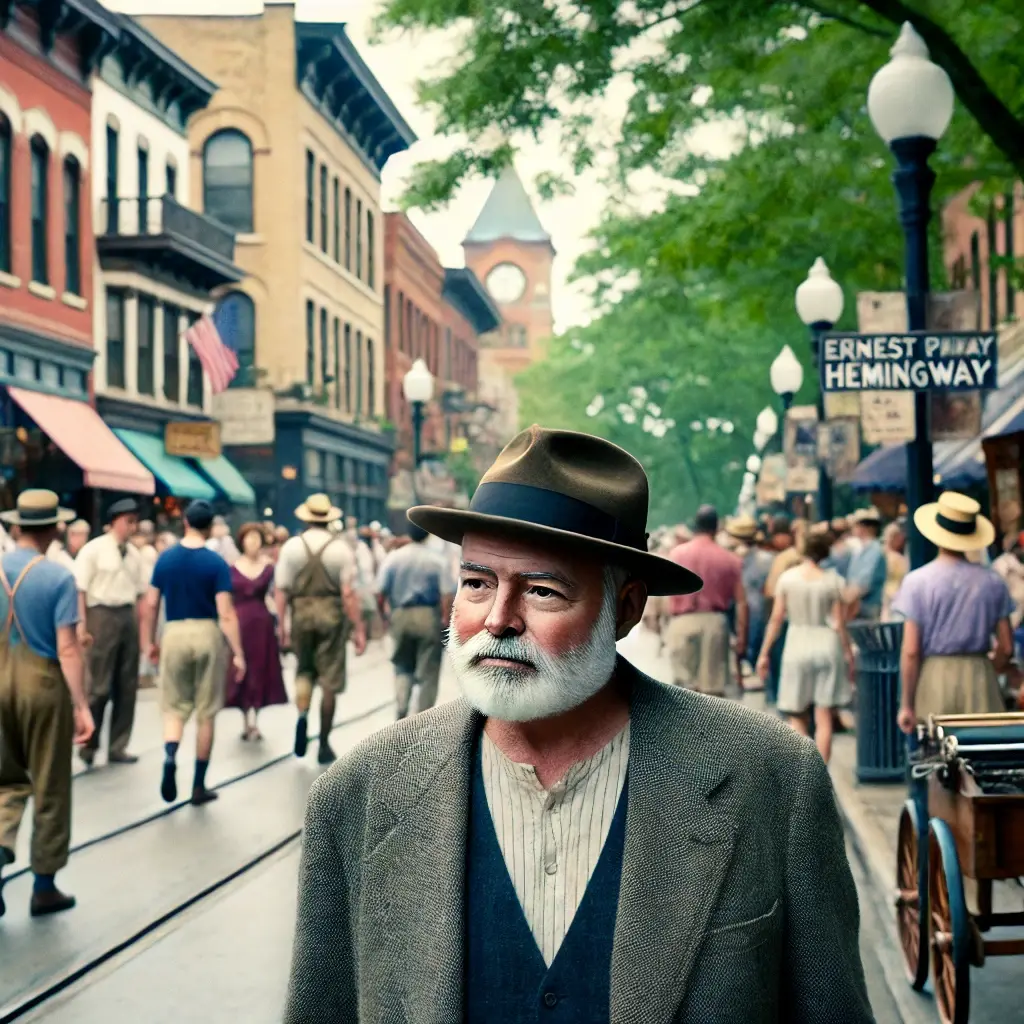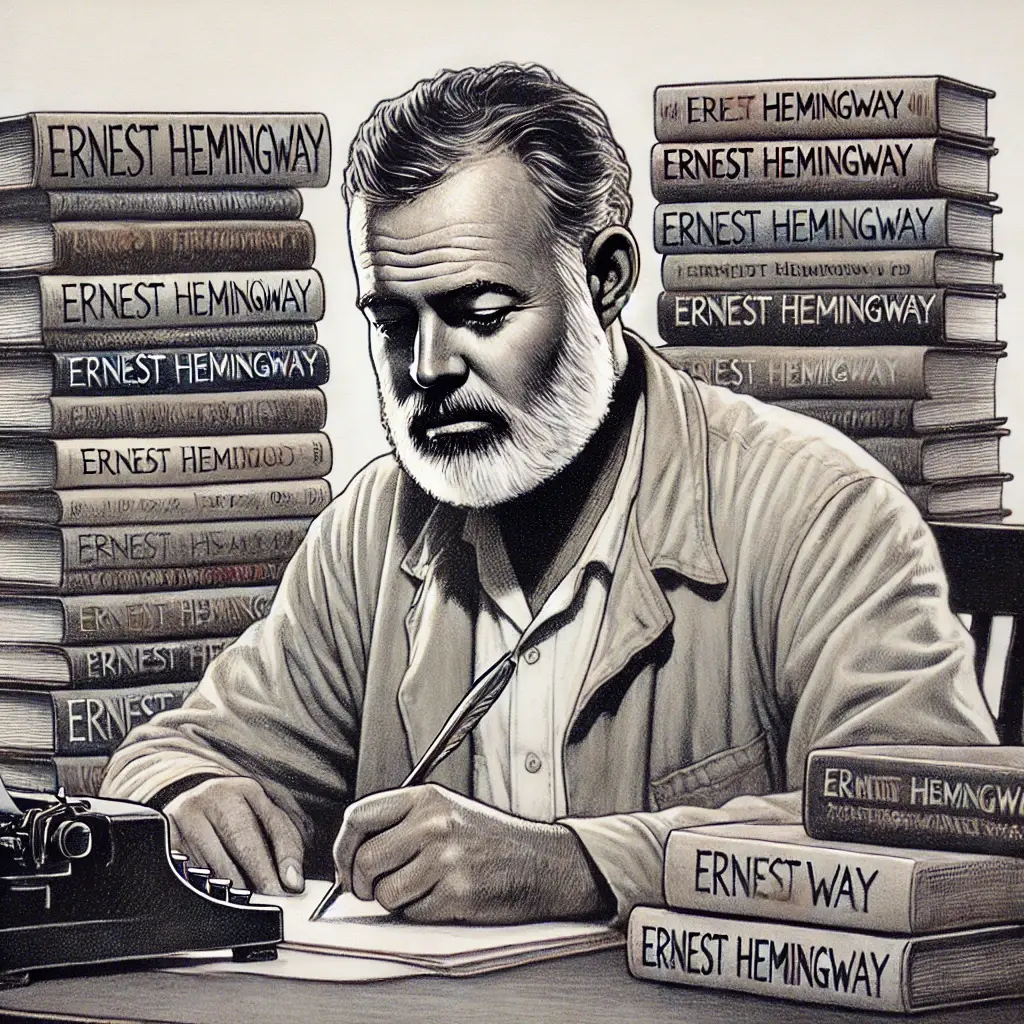On July 21, 1899, Ernest Hemingway, one of the 20th century’s greatest writers, was born in Oak Park, Illinois. Hemingway’s distinctive writing style, characterized by economy and understatement, significantly influenced the development of 20th-century fiction. His adventurous lifestyle and public image fed into his legend, making him an emblem of the lost generation. His works, including “The Old Man and the Sea,” “A Farewell to Arms,” and “For Whom the Bell Tolls,” continue to be celebrated for their profound insights into the nature of human experience and emotion.

Hemingway grew up in a suburban neighborhood in Oak Park, a conservative and affluent community. His upbringing was marked by a mix of culture and outdoor activities, as his father, Clarence Edmonds Hemingway, was a physician with a passion for hunting and fishing, and his mother, Grace Hall Hemingway, was a musician and arts enthusiast. This blend of influences shaped Hemingway’s early interests and would later manifest in his writing.
After graduating from high school, Hemingway worked as a reporter for the Kansas City Star. This experience honed his concise and direct writing style, a hallmark of his later literary works. The newspaper’s style guide, emphasizing short sentences and vigorous English, left a lasting impression on Hemingway and influenced his approach to prose.
During World War I, Hemingway volunteered as an ambulance driver for the Red Cross on the Italian front. In 1918, he was seriously wounded by mortar fire but showed remarkable bravery in rescuing fellow soldiers despite his injuries. His experiences during the war profoundly affected him and served as the inspiration for his novel “A Farewell to Arms,” which vividly depicts the brutality and futility of war through the lens of a love story between an American ambulance driver and a British nurse.
After the war, Hemingway moved to Paris, where he became part of the expatriate community of writers and artists known as the Lost Generation. In Paris, he befriended literary figures such as F. Scott Fitzgerald, Gertrude Stein, and Ezra Pound, who played pivotal roles in his development as a writer. Stein, in particular, became a mentor to Hemingway, introducing him to modernist literature and encouraging him to find his unique voice.
Hemingway’s first major success came with the publication of “The Sun Also Rises” in 1926. The novel, which explores the disillusionment and existential angst of the post-World War I generation, established Hemingway as a leading voice of his time. Its portrayal of expatriates in Europe and the theme of the lost generation resonated deeply with readers and critics alike.
In 1929, Hemingway published “A Farewell to Arms,” which solidified his reputation as a major literary figure. The novel’s stark and unflinching portrayal of war, combined with its tender love story, made it a critical and commercial success. Hemingway’s ability to convey deep emotion through simple, unadorned prose became one of his defining characteristics.
Hemingway’s adventurous spirit was not limited to his writing. He was an avid outdoorsman, enjoying hunting, fishing, and bullfighting. His passion for bullfighting is evident in his non-fiction work “Death in the Afternoon,” which provides a detailed and passionate account of the sport. His love for the outdoors and the thrill of the hunt are also central themes in his fiction, particularly in works like “The Old Man and the Sea” and “The Snows of Kilimanjaro.”
“The Old Man and the Sea,” published in 1952, is one of Hemingway’s most celebrated works. The novella tells the story of Santiago, an aging Cuban fisherman who battles a giant marlin in the Gulf Stream. The story is a meditation on struggle, resilience, and the human spirit, and it earned Hemingway the Pulitzer Prize for Fiction in 1953. The following year, Hemingway was awarded the Nobel Prize in Literature, recognizing his mastery of the art of narrative and his influence on contemporary style.
Throughout his life, Hemingway’s writing was deeply influenced by his personal experiences and his encounters with both triumph and tragedy. His relationships were often tumultuous; he was married four times and had a series of intense, sometimes volatile, friendships. These personal dynamics frequently found their way into his work, adding layers of complexity to his characters and their interactions.
Hemingway’s later years were marked by health issues and a decline in his mental well-being. Despite his struggles, he continued to write, producing works such as “A Moveable Feast,” a memoir of his early years in Paris, which was published posthumously. His ability to capture the essence of his experiences with clarity and poignancy ensured his lasting legacy.
On July 2, 1961, Hemingway died by suicide at his home in Ketchum, Idaho. His death was a tragic end to a life filled with both extraordinary achievements and profound personal challenges. Despite his passing, Hemingway’s influence on literature remains enduring. His works continue to be studied, analyzed, and celebrated for their contributions to the craft of writing and their exploration of the human condition.
Hemingway’s minimalist style and the iceberg theory—where the underlying meaning is implicit rather than explicitly stated—have inspired countless writers and continue to be a subject of literary study. His impact on narrative technique and his exploration of themes such as courage, loss, and existential struggle have cemented his place in the pantheon of great American writers.

The Hemingway legacy is preserved not only through his writings but also through institutions such as the Ernest Hemingway Foundation and the Hemingway-Pfeiffer Museum and Educational Center. These organizations work to promote the study and appreciation of Hemingway’s life and works, ensuring that new generations can engage with his literary contributions.
Ernest Hemingway’s life and literature embody the essence of a richly lived experience. From the battlefields of World War I to the cafes of Paris, the bullrings of Spain, and the fishing waters of the Caribbean, Hemingway’s adventures and insights have left an indelible mark on the literary world. His ability to distill the complexities of life into simple, powerful prose continues to resonate, inviting readers to explore the depths of human emotion and experience.
